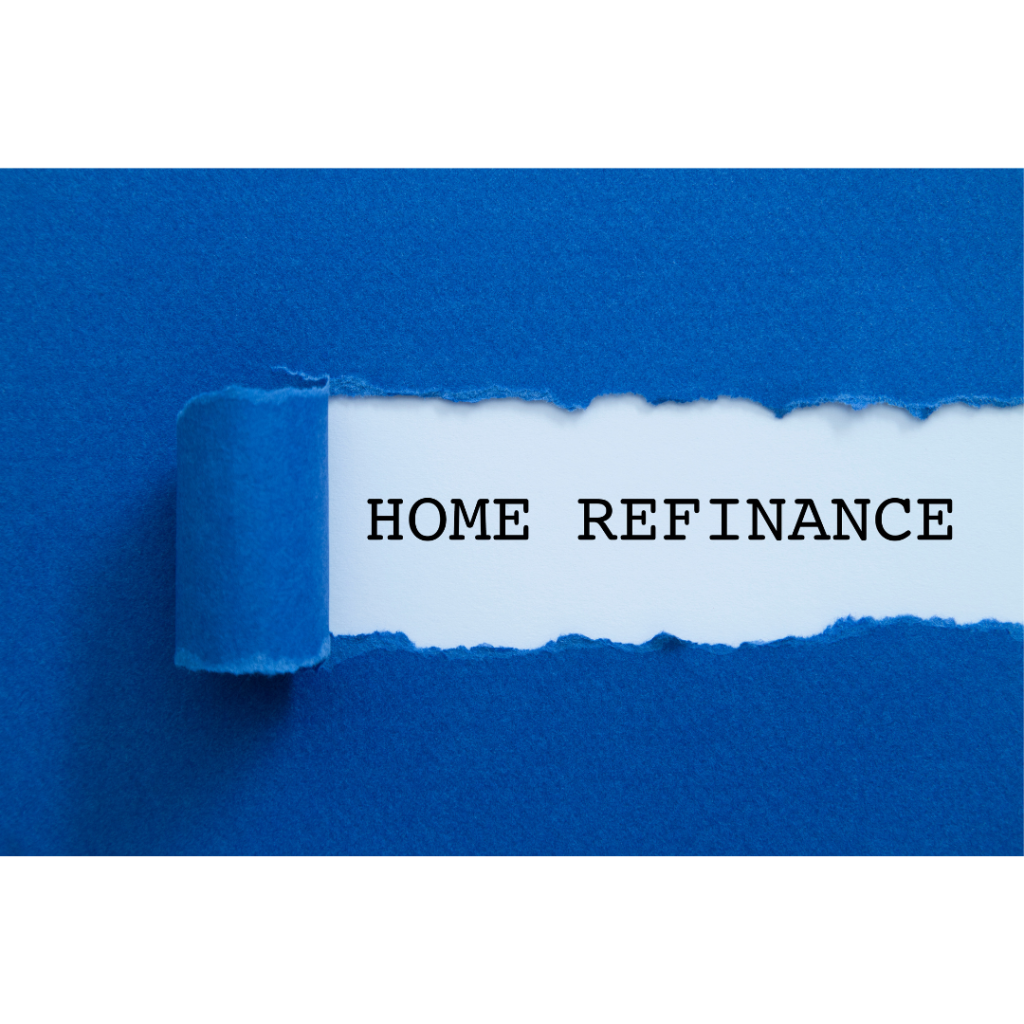When should I Refinance My apartment building?
How long do I have to wait to refinance after buying property cash?
September 22, 2022How to Cash-Out Refinance on Your Investment Property
September 22, 2022
A landlord or real estate investor may consider refinancing rental property assets for several compelling reasons. Firstly, at the very least, it can make some excellent prospects for accumulating wealth available. It can also make it possible for you to reduce your interest rates and monthly payments, which might ultimately help you increase your property’s cash flow.
While this all sounds fantastic, it does come with some significant limitations and a certain amount of risk, just like any investing approach. Investors must therefore comprehend the strategy’s risks and rewards and properly assess them to get the most out of their investments. This is useful for investors who want to decide when to start refinancing. Refinancing generally gives successful investors the chance to increase or enhance their portfolios. When interest rates are low, and the property’s value is high, refinancing a rental property is a good idea since you can negotiate better conditions.
It would be best if you started getting your ducks in a row approximately three months before you expect to refinance your multifamily property, regardless of whether your timetable is determined by a maturity deadline or the conclusion of repairs. This article will help you decide when the right time is to refinance your apartment complex so that you can confidently move forward.
Why should you Refinance your Rental Property?
Although many real estate investors purchase a rental property with the intention of holding it for a long time, this does not mean that the loan must remain the same throughout. In fact, altering finance may help to improve cash flow and scale up to expand a portfolio of rental properties. Following are some of the primary justifications and potential benefits for refinancing a rental property:
Reduce the monthly mortgage payment and interest rate on loans
Lowering the interest rate on your current loan is among the top justifications for refinancing. According to a prevailing opinion, refinancing makes sense if you can lower your interest rate by at least 2%. However, many lenders assert that a 1% savings is a sufficient inducement to refinancing. A mortgage calculator can be useful for planning some of the expenses.
Reducing your interest rate can help you save money while also speeding up the process of increasing your home’s equity and lowering the size of your monthly payment. For instance, the principal and interest payment for a $100,000 home with a 30-year fixed-rate mortgage at a 5.5% interest rate is $568. Your payment for the same loan at 4.1% is $477.
Reduce the term of the loan
The typical period for conventional loans on investment properties is 30 years. An investor can save a sizable sum of money on interest costs by reducing the mortgage term from 30 to 20 years. By reducing the mortgage term from 30 to 20 years on a $150,000 loan, an investor might save roughly $40,000 over the course of the loan, assuming a mortgage interest rate of 4.0%.

Convert equity into cash
Homeowners sometimes use the equity in their homes to pay for large expenses like home renovations or a child’s college tuition. These homeowners may use the fact that renovation increases the house’s value or that the interest rate on the mortgage loan is lower than the rate on borrowing money from another source to support the refinancing.
The more equity in a home that may be taken out via a cash-out refinance and used to buy more rental property, the faster the main mortgage is paid. Depending on the real estate cycle stage, home equity can also rise (or fall) in response to changes in property values.
Boost the value of the home and the rental income
Renovating and enhancing an existing rental property might assist raise the monthly rental revenue. Renovation and improvement funds can be taken out when a home is refinanced. The top features renters look for in a rental home include a washer and dryer (or hookups), air conditioning, patio, hardwood flooring, dishwasher, fireplace, and walk-in closets, according to tenant screening company RentPrep.
Reduce your personal debt-to-income ratio
The proceeds from the refinanced rental property can also be utilized to reduce or eliminate personal debt, such as a student loan or a high-interest auto loan. Most real estate investors apply for a rental property loan using their personal credit history. Therefore, when financing a rental property, an investor may obtain a cheaper interest rate and better loan terms by lowering their personal debt-to-income (DTI) ratio.
Scenarios Where Refinancing May Be Required
Consider some of the most typical instances in which an investor might seek to refinance their rental property:
- Lower interest rates – If your previous mortgage had a variable rate or the fixed rate was substantially higher than it is now, refinancing can assist in reducing your interest rate, saving you a significant amount of money in the long run.
- Reduced mortgage payments – If your mortgage payments are high, you may be able to refinance to a loan with a longer term. For example, you may refinance from a 15-year loan to a 30-year loan, which would significantly cut your monthly payments but cost you more in interest in the long run. However, this is frequently a viable option for long-term investors who need to save money in the short term.
- Perform repairs: Repairs can be costly, but as the owner of a rental property, you are responsible for paying for them. A cash-out refinance can give you the extra funds required to complete the repairs.
- Make home improvements – Some investors will use cash-out refinance loans to pay for renovations or remodeling work. Such home modifications are sometimes viewed as an investment because they may allow the owner to boost the rent.
- Purchase a second investment property – A cash-out refinance can also offer you the funds you need to put down on another residential property, expanding your investment portfolio.

Benefits of Refinancing Your Rental Properties
There are numerous reasons why investors seek to refinance their mortgages. Finally, each scenario is unique, and the reason you refinance should complement your approach and ultimate goals. With that in mind, here are a few primary advantages of refinancing your rental property.
Change to a Fixed-Rate Loan
A variable interest rate (or adjustable-rate mortgage) can result in reduced interest rates in the short term, but they can also rise. This means that if interest rates rise in the long run, they could easily spiral out of control. Locking into a low-interest fixed-rate loan ensures that the interest rate will not fluctuate, for better or worse, for the duration of the loan, which provides significant peace of mind.
Change Your Interest Rate
Securing the best interest rate possible could save you thousands of dollars in the long term. For example, the 30-year fixed-rate mortgage, the most common house loan in the United States, fell to 3.30% on June 12, 2020. This is a significant increase over the 4.7% recorded in 2018.
Boost Property Cash Flow
Mortgage payments are one of, if not the, highest costs for a landlord. As a result, refinancing may be a good choice to acquire lower monthly payments, which will help enhance the property’s cash flow.
Modify Loan Terms
Adjusting the loan terms entails changing the length. For example, a landlord with a 15-year interest rate may elect to switch to a 30-year one. This may have some advantages. However, doing this will affect monthly payments. In general, shorter loan durations will result in larger monthly payments to pay off the debt faster. But, on the other hand, this also means that less interest is paid out altogether.
A 30-year term, on the other hand, means smaller monthly payments, making it easier to establish cash flow positive properties, which means more security and more cash on hand to reinvest in the short term. But, as previously said, it depends entirely on your overall approach.

Cash-Out Refinance
A cash-out refinance investors to take out the equity they’ve built up in their home via past mortgage payments. There are various reasons why an investor would do this. For example, the funds could be leveraged on another investment property for better terms or more opportunities.
Remove Private Mortgage Insurance (PMI)
Lenders typically mandate PMI when the loan-to-value ratio (LTV) exceeds 80%, or borrowers pay less than a 20% down payment. This insurance is intended to safeguard the lender while making these high-risk loans. However, borrowers may incur large long-term fees due to this increased charge.
How to Refinance Your Investment Property
The first step is to assess the current amount of equity in your rental property. Lenders often need at least a 25% buffer. The rationale for this is that the more skin you have in the game, the less likely it is that you will fail on your payments.
Secondly, you must demonstrate that the rental property is genuinely lucrative. You will need to demonstrate a lengthy history of solid rental collections, a current long-term lease, and a strong rental rate for this. These three factors are solid signs that the revenue generated by the property will continue to be reliable, making the property a desirable investment and lowering the possibilities of a payment default.
If you can demonstrate that your rent is dependable and you have enough equity, it’s time to learn more about the refinancing procedure and your alternatives and requirements. It is worthwhile to consult with several different lenders and ask questions to ensure that you have a firm understanding of the procedure, the various standards lenders have, and the specific requirements you will need to satisfy to qualify for refinancing.
You will be able to understand all prospective opportunities as they pertain to you and your investing strategy in this manner.

Tips on Refinancing Small Apartment Buildings
Rental properties can be an excellent investment; however, if you own one, you know that keeping your overhead low is critical to maximizing your return on investment. Indeed, if you’re not careful, the costs of owning and maintaining a rental property may exceed the potential reward. To avoid this tragedy and save money wherever possible, you may want to consider refinancing your rental property mortgage at some point.
Of course, not all landlords refinance their rental properties to reduce operating expenses. Some investors will do a cash-out refinance to use the proceeds to renovate their rental property or to purchase a new rental property. In any case, the information below will walk you through all you need to know about refinancing a rental property.
Give a detailed description of your property and tenants
Once you start the process, lenders will conduct their due diligence on you and your home, but you may make the process go more easily by being prepared. A lender’s first two requirements are current and comprehensive operating statements and rent rolls. They want to know if the building is working smoothly, what your units are renting for, and what your typical occupancy is. Being able to produce legible, ordered copies of these documents can get you off to a good start with your lender.
Demonstrate how your investments have increased the property’s worth
If you’ve renovated your home in the recent few years, you’ll need to produce proof of those modifications to your lender. For example, you may have boosted the property’s value by landscaping, adding green upgrades, renovating kitchens, or adding amenities. These adjustments should be included on a schedule of improvements because they may be helpful for your refinance terms.
Resolve any credit or servicing difficulties
Now is a perfect moment to review your credit to ensure that there are no outstanding issues, including any issues that have developed with your servicing team since your loan was first established. In addition, you’ll want to ensure that you’re in good enough health to close on your new loan without being held up by primary concerns.
Have a broad notion of the type of loan you want
Borrowers can use a variety of tactics to get financing based on their preferences and needs, and Aurum and Sharpe provide numerous flexible financing options. For example, if cash flow is your first objective, we can finance up to 80% loan-to-value in certain markets. In addition, we have partial- and full-term interest-only options if you want to maximize your returns. Finally, if you need more flexibility, we provide several prepayment options. Visit Aurum and Sharpe to find an approved lender or for more information on our financing choices

Choosing the Right Lender
You have numerous lenders to select from for a refinance loan on your rental property. However, it is normally recommended that you go to the current rental property mortgage lender first because you already have a relationship with them, and they may offer you better terms in exchange for continuing with them.
However, before making a decision, compare terms with different lenders. In some situations, your present lender may be ready to match more advantageous terms that you obtain elsewhere to keep their relationship with you. Local banks, credit unions, and online lenders are some options available to you. You should also investigate various federal programs, such as Fannie Mae, Freddie Mac, and HARP (Home Affordable Refinance Program).
Make sure that you investigate the lender’s reputation. It’s worth noting that the best terms aren’t necessarily the greatest option. Look for someone who communicates well and is respectful. After all, you want to be able to get along with them.
How Can Aurum and Sharpe Help You with Refinancing?
Like many financial transactions, mortgage refinancing is complex and necessitates due investigation on the part of homeowners considering it. Speak with an Aurum and Sharpe trusted lender for quick answers to some of your issues. This will assist you in determining whether refinancing your apartment is the best option for you.
Conclusion
In conclusion, qualifying for a home loan boils down to calculating how likely you are to default on payments. While terms vary by lender, most lenders will provide shorter periods with somewhat higher rates for rental property financing because rental properties are often viewed as riskier than primary residences by lenders.
It will be easier to secure refinancing if you keep precise and detailed records of your income and expenses, tenancy history, and other financial evidence. Furthermore, it’s critical to understand when you’re refinancing and to discuss your alternatives with lenders to understand their specific qualification requirements and ensure you achieve the desired outcomes.
If refinancing lowers your mortgage payment, reduces the term of your loan, or enables you to build equity more quickly, it may be a good financial move and could also become a helpful instrument for debt reduction when used properly.
It’s also worth noting that a wise homeowner continually seeks ways to reduce debt, increase equity, save money, and eliminate mortgage payments. Taking cash out of your equity when you refinance does nothing to assist you in reaching any of those objectives.
Mortgage Rates
DSCR Mortgage: 7.375%
Commercial Mortgage: 7.5%
Single family, Condo Investment Property: 7.375%
Portfolio of Residential Homes: 7.5%
Calculate Your Monthly Payment
Mortgage Information
Monthly Payment
Principal and Interest: $0
Total Monthly Payment: $0


